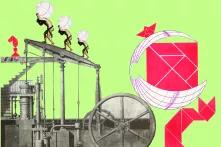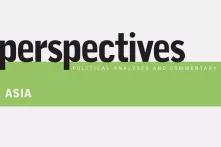Afghanistan is abundantly rich in natural resources. Although the country is facing a lot of problems, mining could have the potential to be a driver of poverty reduction and economic growth.

Introduction
One of the important and basic pillars in the economy of every country are its natural and subterraneous resources. By the growing demand of industry and technology, e.g. trees for paper and fuel production, iron ore for steel products, copper for wire, electrical equipment and platinum are used for telecommunications equipment etc. The requisition for natural resources and mines is increasing more and more and also, contrarily, the acceleration towards discovering and extracting them causes progressive increase in their value.
I would like to reflect Afghanistan’s mining sector because this country is facing extreme poverty, and the natural resources deposits in the country, for mining especially, is now a great hope for the people that it might pay for current developments in agriculture and food security, housing and education and infrastructure. This can happen by securing sustainable progress that needs more studies and concentration in the mining sector.
Overview on Mining in Afghanistan
Afghanistan is a country abundantly rich in natural resources. There are currently more than 1,400 mineral deposits that have been identified including energy minerals such as oil, gas and coal and other metallic and non-precious minerals such as lead, cement-grade limestone, gemstones, copper, iron, gold and salt. (1) The iron and copper deposits of Afghanistan can generate a large amount in the economy of the country if these mines are extracted in a proper and standard way with transparency.
Mining developments can be a pillar of future economic growth in Afghanistan creating employment and income; developing transport and other infrastructure which will help open up areas for overall economic development – generating not only considerable domestic revenue but also trade and balance of payments benefits. Simply put, if managed properly, mining in Afghanistan has the potential to be a driver of poverty reduction and sustained economic growth.
Since Afghanistan is a country rich in mining resources, it is facing a lot of problems in discovering and extracting its natural resources because the country does not have enough experts in the mining sector as well as technical facilities like machinery due to the three decades of war and conflict that left over development in Afghanistan. Mining is said to be a 'political game' in Afghanistan, when Afghan minister of mines Wahidullah Sharani said geologists have discovered untapped mineral deposits worth an estimated $3 trillion that could help economic growth and reduce unemployment.(2)
Opportunities and Analysis
Mining in Afghanistan has the potential to be a driver of poverty reduction and economic growth. It can create direct and indirect employment and income, develop transport and other infrastructures.
"Gas fields have been identified in several locations of Afghanistan, 500 total fields (8 identified having the geological capacity of 180 billion cubic meter of gas). Sar-e-pul oil reserve has been identified with 44.5 million tons with the extractable reserves reaching 14.5 metric tons."(3)
Afghanistan’s Minister for Mines, Waheedullah Shahrani, stated at the August conference in Kabul that the mining sector would constitute 45 to 50 per cent of Afghanistan's economy by 2024.(4)
"Aynak and Hajigak mines could create more than 90,000 direct and indirect jobs and approximately $500 million in annual fiscal revenues by 2020".(5)
The Hajigak Iron project is the biggest project in the history of Afghanistan not just from an economic perspective but also from the scale of its operations. There are two ore zones, the middle district which will be mined as an open pit, and the west district, to be mined as an underground, block cave operation. The mine will extract about 9.9 million tons of ore per annum from the open pit, yielding some 197,000 tons of copper. Adding the underground section, this will increase to 19.8 megatonnes and 394,000 tons of copper per annum from year 17; the planned mine life is about 30 years.(6)
The Aynak copper mine is the other of the two biggest mining sites in the country. It provides capacity building for practical experience for on-the-job employees, formal technical training, with emphasis on English mining terminology and external visits to large scale mines, with emphasis on copper, in South Africa and Zambia. It is estimated at 11.3 million tons and it is expected to employ up to 40,000 people directly and indirectly when fully operational. This could generate more than $350 million in taxes to the government of the Islamic Republic of Afghanistan (GIRoA) annually.(7)
The Aynak site will provide the landlocked country of Afghanistan the ability to further increase its net export business which at current is one of the lowest globally.(8)
Challenges and Recommendations
Human Rights and Development
The inequitable allocation and overexploitation of resources can have direct and indirect impact on human life. Land rights of indigenous people and physical displacement or resettlement of local people as a result of extractive activities can be direct impact: they may lose their houses, shops, livestock. It's more difficult for the indigenous people because the place may have patrimony value for them, they may have spent their childhood there and thus have some kind of attachment to that place.
The mining companies should undertake and provide resettlement, schools and medical facilities and other compensation for local residents adversely affected by mine development activities and for the employees who work in the mining site.
For example, in Aynak copper mining, about 82 families form two villages which are close to the mine pit area, based on an agreement with the residents of the two villages, most of them have been moved out to alternate locations after payment of compensation amounting for their houses as agreed to with them. But the issue, which is still unresolved, is the agricultural land acquisition and payment of compensation due for this land, because there weren't any proper land records with the government and huge claims of land ownership by villagers made the issue more difficult.(9)
Legislations
Afghanistan National Development Strategy (ANDS) mentions the potential of the mining industry to generate employment and accelerate development in rural areas. To develop the huge mineral potential, the government of Afghanistan has adopted a new policy direction, transferring the task of exploitation of the country's natural resources from the state to the private sector.(10) But still there are no guarantees that the that Afghan leaders and international community will follow best practices for natural resources exploitation on how to establish a good governance frame work.
For a proper mining exploitation, there should be officials and authorities from the government, NGOs, community and civil society who monitor and evaluate the mining process. The process and revenue of the mining sector must be controlled by the specified authorities for the transparency of the mining process.
The government of Afghanistan has signed up for the Extractive Industries Transparency Initiative (EITI) a global voluntary standard to ensure transparency of payments from natural resources, to implement it at the national level.
Environmental Impacts
Mining operation can have a lot of environmental impacts in the world. The extracted site of the mining area should be planted with trees and other plants to protect the environment against erosion and other disasters. Afghanistan has an environmental law which sets out the process involved with preparation and approval of EIAs and SIAs. The National Environmental Protection Agency (NEPA) is charged with the responsibility to review these impacts assessments and to issue the relevant authorizations. The environmental and social unit in the Ministry of Mines, together with NEPA, monitors and evaluates the mining operations in the country.
Despite the environmental law, as Afghanistan has never had bigger industry before, it has little or no history of environmental protection either. If the extraction process is not undertaken strictly, it can lead to pollution of the soil, contamination of water and even the air. Such damage would not simply be a local problem. Impacting on Logar, the province the Aynak copper mine is in, but it could also affect other surrounding provinces, including Kabul. According to the ministry of mines the Aynak copper mine at its full production from the open pit, the mine will generate about 60 million tons of waste rock and 9.7 million tons of tailings, per annum.(11) According to the interview recorded by TOLOnews TV with the dean of the Geoscience Faculty of Kabul University, he warns of a greater risk of natural disasters. "As I know, all the procedures, the research, extraction, and the purification will take place in Afghanistan. If the decisions behind all this are not made correctly, you can imagine what tragedies lie behind."(12)
Security
In Afghanistan, security is a big issue all over the country. Many mines are in rural areas outside central government control or located in unstable areas e.g. the copper and gold deposits of Afghanistan in Helmand and Kandahar provinces which have border with Pakistan and insurgents attacks on Buddhist antiquities of Aynak copper project in Logar province. As many cases of other countries show, if extractive industries are developed in the absence of effective governance, then instability, corruption, violence and increased funding of armed illegal groups would likely result.
But the country's mining minister, Wahidullah Shahrani, remains upbeat despite the risks and the planned withdrawal of foreign troops next year. In his interview with the ABC news in Australia he says: "Security is a concern, is a challenge, but it doesn't mean the entire Afghanistan is insecure, and the more investment we get; it will also lead to higher degree of stability."(13)
Loss of historical heritage
Loss of historical heritage is one of the hottest issues as it is the national identity of a country. It is a source of national pride and if it is well managed it could provide the foundation for a future tourism industry.
Unfortunately, some of Afghanistan's historical heritage has already been damaged in the three decades of war like the Taliban's demolition of the Bamyan statue and the archeological sites and heritages in the Aynak copper mine of Afghanistan, which sits on a vast copper deposit and is about to be destroyed.
Conclusion
Afghanistan is a country very rich in extractive resources like copper, iron, gold, coal, and gemstone among others. The improvement of the security after the Taliban regime, international aid agencies working in the country, the legal framework of mining and the Afghan Government's strategy for legitimizing the mining sector improve the prospects for investments and will increase standards and the country's mineral potential could greatly improve the country's economy and provide funds to develop the country.
Aynak copper deposits in Logar province and the Hajigak iron ore deposits are the world class mineral deposits of the country. With the oncoming of business opportunities and foreign investment, the unique aspects of Afghan culture must be protected, while measures are taken to modernize and develop the country for the benefit of the nation. With the increase of revenue that is associated with mineral extraction, investments will allow for increased national stability, improvement of schools, roads, and other forms of infrastructure, Afghanis will benefit and the country could see great progress.
(1) AISA, Market Prospects – A country abundantly rich in natural resources, pg 2
(2) Bloomberg: "U.S., Afghan Study Finds Mineral Deposits Worth $3 Trillion" (by Eltaf Najafizada); January 29, 2011
(3) Joe Banavige, Afghan Mining Opportunity, February 2011
(4) Phantomreport: "UN chief says discovery of vast mineral deposits in Afghanistan should be managed properly" (Source: Wadsam; November 12, 2012)
(5) Ministry of Mines, FAQ’s and Briefing Note on Mining and Hydrocarbon Sector, April 2011
(6) Aynak Copper Mine, Project Overview, May 2013
(7) Joe Banavige, Afghan Mining Opportunity, February 2010
(8) Cameron Nazminia, Mining in Afghanistan: A Pathway for development and modernization, 2013, pg 72
(9) Note on Resettlement Process of Project Affected Persons at Aynak, March 2010, pg 1
(10) Ministry of Mines, Social Policy Guidelines for Mining Sector in Afghanistan, pg 2
(11) Aynak Copper Mine, Project Overview, May 2013
(12) TOLOnews: "Environmental impact of Ainak copper mine"; June 22, 2012
(13) ABC News Australia: "Afghanistan to begin first commercial oil production"; May 19, 2013

